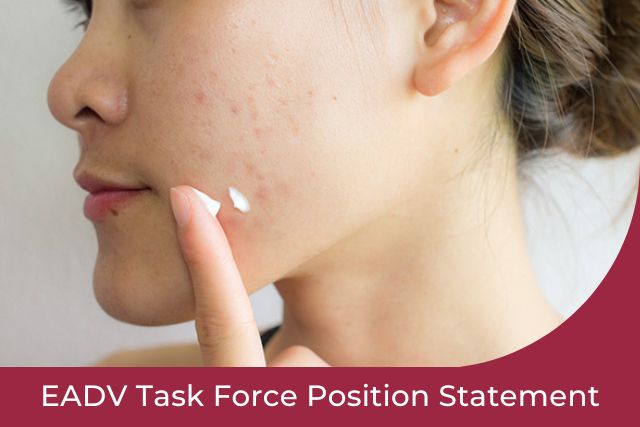Benzene is a chemical that evaporates into the air very quickly. Its vapor is heavier than air and may sink into low-lying areas. Benzene dissolves only slightly and floats on top of water.
Benzene is formed from both natural processes and human activities. Natural sources of benzene include volcanoes and forest fires. Benzene is also a natural part of crude oil, gasoline, and cigarette smoke.
Benzene is widely used in the USA. It ranks in the top 20 chemicals for production volume. Industries use benzene to make other chemicals that are used to make plastics, resins, and nylon and synthetic fibers. Benzene is also used to make some types of lubricants, rubbers, dyes, detergents, drugs and pesticides.
Outdoor air contains low levels of benzene from tobacco smoke, gas stations, motor vehicle exhaust and industrial emissions. The benzene in indoor air comes from products that contain benzene such as glues, paints, furniture wax, and detergents. Indoor air generally contains levels of benzene higher than those in outdoor air. A major source of benzene exposure is tobacco smoke. Smoking cigarettes with an average yield of 50 micron of benzene per cigarette has been compared with the occupational maximum exposure limit (16 mg m-3) concentration and with USA studies on the home environment.
Benzene is absorbed rapidly and extensively after inhalation and ingestion. Inhalation accounts for 95 to 99 percent of benzene exposure. It is absorbed less extensively through intact skin; however, percutaneous absorption may contribute to total body burden.
The International Agency for Research on Cancer (IARC) classifies benzene as a Group 1 carcinogen (carcinogenic to humans) (IARC 2004). EPA classified benzene in Category A (known human carcinogen) based on convincing evidence in humans supported by evidence from animal studies. IARC notes that benzene exposure has been linked with acute lymphocytic leukemia (ALL), chronic lymphocytic leukemia (CLL), multiple myeloma, and non-Hodgkin lymphoma.
The seriousness of poisoning caused by benzene depends on the amount, route and length of time of exposure, as well as the age and preexisting medical condition of the exposed person. Brief exposure (5–10 minutes) to very high levels of benzene in air (10,000–20,000 ppm) can result in death. Lower levels (700–3,000 ppm) can cause drowsiness, dizziness, rapid heart rate, headaches, tremors, confusion, and unconsciousness. Most of the metabolites of benzene leave the body in the urine within 48 hours after exposure.
Some women who breathed high levels of benzene for many months had irregular menstrual periods and a decrease in the size of their ovaries. It is not known whether benzene exposure affects the developing fetus in pregnant women or fertility in men.
Animal studies have shown low birth weights, delayed bone formation, and bone marrow damage when pregnant animals breathed benzene.
In 2021, several types of cosmetic products (hand sanitizers, deodorants, antiperspirants, sunscreens, dry shampoos) in the USA and Australia were tested and found to contain benzene. The products were voluntarily recalled from the market by the respective companies. Benzene was detected in body spray products up to the concentration of 17.7 ppm and in sunscreen products at concentrations up to 5.2 ppm and 2.4 ppm used by adults and children, respectively.
In an appraise conducted for New Zealand exposure to benzene while using deodorants/antiperspirants and sunscreen has been considered incidental. For both the product categories, inhalation and dermal routes were considered relevant for adults. Dermal exposure was also considered for children using sunscreen. In this assessment, both non-cancer and cancer human health risk of benzene in cosmetics (deodorants and sunscreen) through dermal and inhalation pathways were evaluated. Non-carcinogenic human health risk on exposure to benzene in the cosmetic products was evaluated by applying Margin of Safety (MoS) methodology. The MoS was greater than 100 for children and adults (aggregated risk), which indicates that benzene in deodorants (in adults) and sunscreen (in adults and children) is of low concern for public health. Lifetime cancer risk was estimated for adults (sunscreen and deodorant use) and children (sunscreen use only). Risks were estimated based on the dermal and inhalation pathways of exposure. The result indicates that lifetime exposure to benzene from cosmetic use will equate to an excess cancer risk of <10-5, or 1 excess cancer in 100,000 individuals, which has been used in New Zealand for standard setting.
Currently, popular anti-acne products from several companies have been detected to contain benzene. Certain benzoyl peroxide products might contain considerable levels of benzene such as 100 parts per million (ppm) after 10 days, 175 ppm after 14 days and 150 ppm after 18 days. Over 10 parts per million (ppm) of benzene were detected in 42 products, over 100 ppm in 17 products, and over 1,500 ppm of benzene produced in two products. These levels were discovered after the products were incubated for 18 days at 50°C. The US FDA recommends that humans be exposed to no more than 2 pmm of benzene per day. The level of absorption that topical benzene exposure can cause is still unknown. In the EU, USA, Australia and China, regulatory agencies have defined concentration limits for benzene (residual solvent or impurity) in the final product or mixture.
Benzene was not intentionally added to these products. It appeared as a byproduct during production or degradation of benzoyl peroxide. Lawsuits are on their way in the USA.
As a precaution, we encourage everyone to avoid exposing their creams to direct sunlight and high temperatures. Topical drugs should not sit in the car for long hours during the summer time.
Prof. Dr. Prof. honoraire Dr. h.c. Christos C. Zouboulis Chair, EADV Task Force for Acne, Rosacea and Hidradenitis Suppurativa March 24, 2024
Relevant references
https://emergency.cdc.gov/agent/benzene/basics/facts.asp
https://www.esr.cri.nz/media/xglj44bl/esr-health-risk-assessment-benzene-in-cosmetics.pdf


